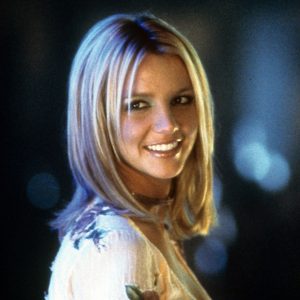National Test Results Highlight Ongoing Challenges in Education Recovery
The release of national test results last month revealed a concerning trend: not a single state in the U.S. has returned to pre-pandemic academic levels in both math and reading. This startling reality comes despite the allocation of nearly $190 billion in federal pandemic relief funds to schools. The data paints a sobering picture of the long-term impact of the COVID-19 pandemic on education, with many students still grappling with learning gaps and attendance issues. While some districts have shown signs of progress, the overall prognosis underscores the complexity of recovery efforts in America’s schools.
The Struggle to Catch Up: Student and Teacher Perspectives
At Kramer Middle School in Washington, D.C., eighth grader Aiyden Wiggins shared his experiences with CBS News, describing how he has struggled with math since returning to full-time in-person learning. Wiggins and his classmates spent approximately 1.5 years in remote learning during the pandemic, a period that has left many students behind academically. Mohamed Koroma, an eighth grade English Language Arts teacher at Kramer Middle School, highlighted the specific challenges students face: "We’re still trying to fill in those gaps that they didn’t get at the lower levels. Because it’s hard to grapple with eighth-grade text if you are on a lower reading level." Koroma’s observations reflect a broader struggle across the country, where educators are working tirelessly to help students bridge the learning deficits caused by the pandemic.
The Role of Absenteeism in Learning Challenges
A recent study released by researchers from Harvard, Stanford, and Dartmouth sheds light on another critical factor hindering education recovery: absenteeism. The study revealed a widespread rise in chronic absenteeism, particularly in high-poverty districts. In Washington, D.C., for instance, public schools reported a chronic absenteeism rate of 37% for the 2023-2024 school year, though this represents an improvement from the previous year’s rate of 41%. Koroma emphasized the importance of getting students back into the classroom: "The biggest thing is to just get them inside the building. Once we get them in the building, learning is gonna happen." The challenge of attendance is not unique to Washington, D.C., but it underscores the interconnected issues of access, engagement, and academic recovery.
Bright Spots in Education Recovery
While the national data is disheartening, there are glimmers of hope. The study identified more than 100 local school districts that have not only recovered but are now performing better in math and reading than they were before the pandemic. These success stories highlight the potential for targeted interventions and innovative strategies to accelerate learning. Washington, D.C., while not yet among the top-performing districts, has made significant strides. Over the past two years, the nation’s capital has ranked first in the country in terms of education recovery in both math and reading. This improvement is particularly notable given that the district ranked 32nd in math recovery and fifth in reading recovery between 2019 and 2024.
Innovative Solutions for Learning Recovery
Kramer Middle School Principal Katreena Shelby attributes her school’s turnaround to thinking differently about how to support students. She posed a critical question: "How can we make classroom sizes smaller, but give kids more opportunities to get remediation during the school day?" One of the key strategies implemented at Kramer Middle School is high-impact tutoring, where tutors work with students during school hours to provide targeted academic support. This approach has proven effective not only at Kramer but also in other districts across the country. Additionally, Washington, D.C., invested some of its pandemic relief funds in hiring more teachers and offering $1,000 stipends to educators who completed literacy training courses. Shelby noted that these efforts had a dual impact: they improved literacy and math skills while reducing truancy by 20% in just one year. Perhaps most importantly, students’ progress has been a source of encouragement, motivating them to stay engaged in their learning.
The Path Forward: Lessons from the Pandemic
The national test results and study findings serve as a reminder of the pandemic’s enduring impact on education. While the challenges are significant, the success stories from districts like those in Washington, D.C., offer valuable lessons for the path forward. By prioritizing smaller class sizes, targeted tutoring, and teacher support, schools can create environments that foster academic recovery and student engagement. The reduction in truancy and the progress in literacy and math skills demonstrate that with the right interventions, even the most vulnerable students can make up lost ground. As educators, policymakers, and communities continue to navigate this critical period, the focus must remain on addressing the root causes of learning gaps and absenteeism while leveraging innovative strategies to ensure no student is left behind. The pandemic has exposed deep vulnerabilities in the education system, but it has also revealed the resilience and adaptability of students, teachers, and schools. With continued commitment and creativity, the recovery process can ultimately lead to a stronger, more equitable education system for all.












